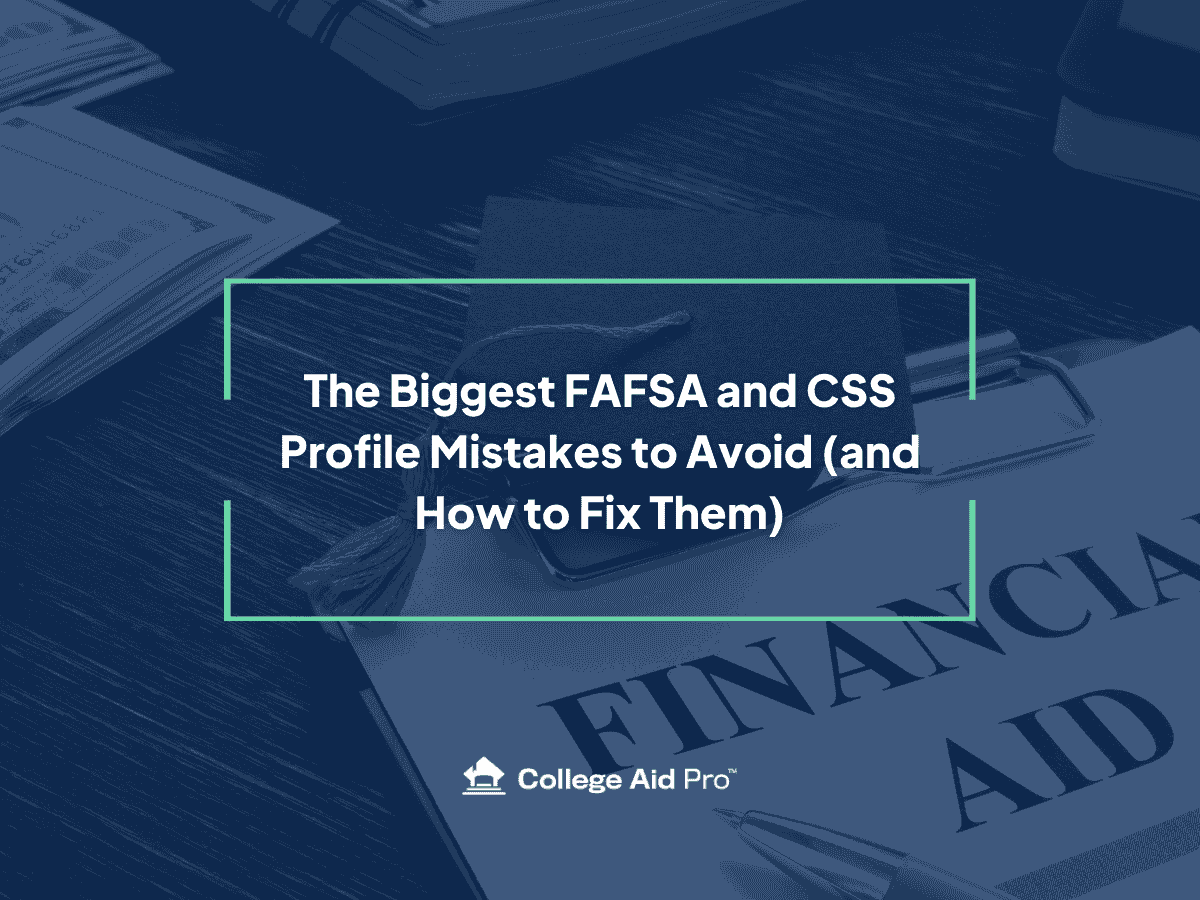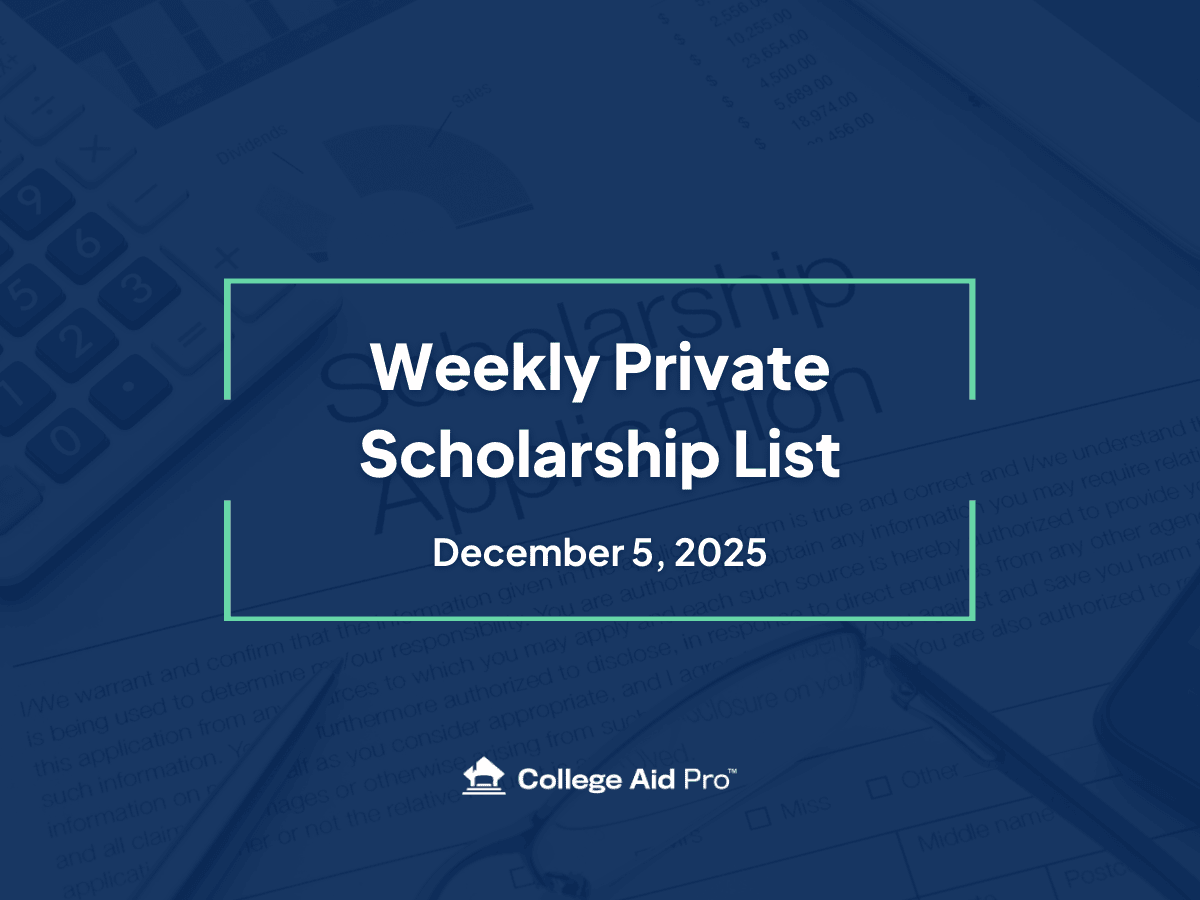The Biggest FAFSA and CSS Profile Mistakes to Avoid (and How to Fix Them)
When it comes to paying for college, the FAFSA (Free Application for Federal Student Aid) and the CSS Profile are critical forms that determine how much financial aid your family may receive. Yet every year, thousands of families make simple—but costly—mistakes that reduce or even eliminate their eligibility for aid.
In this episode of College, the Podcast, hosts Matt Carpenter and Peg Keough share the most common financial aid pitfalls families encounter, along with practical strategies to avoid them. If you want to maximize your chances of receiving need-based or merit-based aid, this guide will help you steer clear of the traps.
Why Families Skip the FAFSA (and Why That’s a Mistake)
The number one mistake families make is not completing the FAFSA or CSS Profile at all. Many parents assume they earn too much to qualify for aid, but this often isn’t true.
Peg explains that even families with incomes well into the six figures can be eligible for need-based aid—especially as tuition continues to climb past $80,000 or even $100,000 per year at some private schools.
Here’s why you should always complete the forms:
- Merit aid eligibility – Some colleges require the FAFSA or CSS Profile even for scholarships that aren’t based on financial need.
- Future flexibility – Submitting the forms freshman year allows you to qualify later if your financial situation changes (job loss, illness, divorce, etc.).
- Potentially thousands in aid – Matt recalls meeting a parent who assumed he wouldn’t qualify, only to discover he was eligible for nearly $200,000 in need-based aid across his children’s college careers.
Bottom line: Even if you think you won’t qualify, fill out the forms. You might be leaving money on the table.
Missing Deadlines = Lost Money
Another costly error is missing priority financial aid deadlines. Each college sets its own timelines, often tied to admission type (early action, early decision, or regular admission).
- Some schools reduce aid packages by thousands if you miss the deadline—even for returning students.
- States also set FAFSA deadlines for local grant programs. In many cases, funds are limited and distributed on a first-come, first-served basis.
Pro tip: Families working with College Aid Pro aim to submit everything by October to avoid deadline confusion.
Common FAFSA Mistakes That Hurt Eligibility
The FAFSA can be tricky, and even financially savvy parents can make mistakes. Here are the most damaging ones:
1. Reporting Retirement Accounts as Assets
Your 401(k), 403(b), IRA, Roth IRA, and pensions should not be listed as FAFSA assets. Unfortunately, the instructions are buried in fine print, and many families accidentally include them. Doing so artificially inflates your assets and reduces need-based eligibility.
Rule: Retirement accounts are excluded. Leave them off.
2. Including Home Equity on the FAFSA
The FAFSA asks about the value of “investments, including real estate,” but this does not mean your primary home. Families mistakenly include their home equity, when only second homes or investment properties should be counted.
Rule: Do not list your primary residence equity on the FAFSA.
3. Incorrectly Reporting 529 Plans
- If the parent owns the 529, it’s reported as a parent asset (not the student’s).
- Only list the 529 balance for the child attending college—not for siblings.
- Grandparent-owned 529s are not reported at all on the FAFSA.
This matters because student assets are assessed at 20–25%, while parent assets are assessed at around 6%. Misreporting could drastically reduce your aid.
4. Overstating Business Value
New FAFSA rules now exclude small family-owned businesses with fewer than 100 employees. However, families often overestimate business value when they do need to report it.
Rule: Only report what your business could realistically sell for today. For many small businesses, that value may be close to zero.
CSS Profile Mistakes That Cost Families
Unlike the FAFSA, the CSS Profile (used by about 200 mostly private colleges) digs deeper into family finances. Common mistakes here include:
1. Overestimating What You Can Afford
The CSS Profile asks: “What can your family contribute to your child’s education each year?”
If you list more than your Student Aid Index (SAI), colleges may simply accept your number—raising your expected family contribution.
Strategy: Never put a number higher than your SAI.
2. Using the “Special Circumstances” Section Incorrectly
At the end of the CSS Profile, there’s an open-text section for additional information. Parents often detail medical bills, home repairs, or support for extended family.
The problem? Colleges may claim they “considered it” in your aid package, leaving you with no grounds for an appeal later.
Strategy: Leave this section blank. Save your “special circumstances” for a formal appeal after you receive your financial aid offer.
Key Takeaways for Parents
- Always file the FAFSA and CSS Profile, even if you don’t think you’ll qualify.
- Check every college’s deadlines and aim for October submissions.
- Avoid common FAFSA errors: don’t include retirement accounts, primary home equity, or misreport 529s.
- On the CSS Profile, don’t overstate what you can pay and save your special circumstances for an appeal.
- Seek expert guidance if you’re unsure. A single mistake can cost your family thousands of dollars.
Final Thoughts 💭
Completing the FAFSA and CSS Profile may feel overwhelming, but avoiding these common mistakes can make a huge difference in your child’s financial aid package. As Matt Carpenter puts it, “Don’t give colleges an excuse to give you less money—they’ll usually take it.”
By being proactive, double-checking the details, and submitting on time, you’ll set your family up to receive the maximum aid possible.



